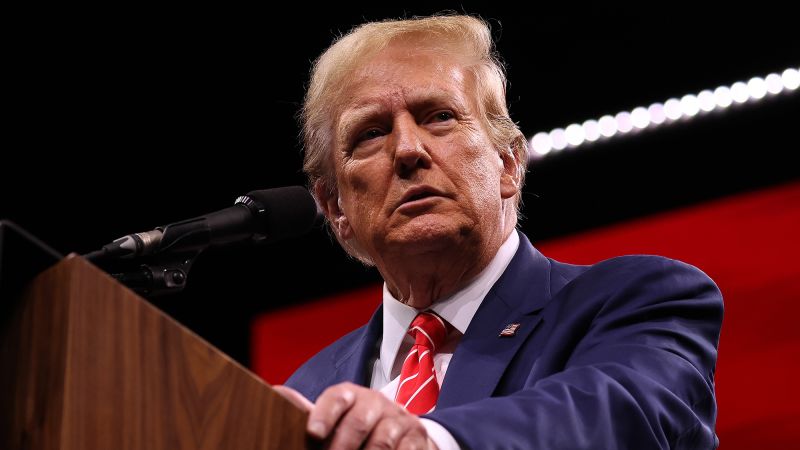Former President Donald Trump’s trade agenda involves a significant increase in tariffs on Chinese goods and all US imports, despite warnings that these actions could have detrimental effects on the US economy. While Trump has argued that tariffs would protect working-class Americans, recent research suggests they would actually harm consumers, costing at least $500 billion annually and potentially leading to slower economic growth and lost competitiveness. The proposed tariffs would cost the typical middle-income household at least $1,700 per year, with the potential for the actual impact to be even higher.
President Joe Biden has largely kept Trump-era tariffs in place, adding more targeted tariffs aimed at combating the influx of cheap Chinese goods in the global marketplace. Treasury Secretary Janet Yellen has called for Europe to join the US in fighting against industrial overcapacity and protecting businesses worldwide. Biden’s tariffs, although smaller in scale compared to Trump’s proposals, are estimated to cost the typical family around $30 per year. Despite criticisms, the Trump campaign argues that Trump’s trade deals were beneficial for the US economy and promises to reinstate his America First agenda if he is reelected.
While there are legitimate concerns about China’s trade practices shared by both Democrats and CEOs, economists have expressed alarm at the potential consequences of Trump’s tariff proposals. Moody’s estimates that even with tax cuts, Trump’s proposed tariffs could cost the US economy jobs, worsen inflation, and shrink GDP. The Peterson Institute researchers warn that revenue generated from the tariffs would not be enough to cover the cost of extending Trump’s tax cuts, which primarily benefit the top end of the income distribution. These trade tensions could also impact international collaboration on critical issues such as climate change, security, and public health emergencies.
The debate surrounding tariffs revolves around the question of who actually bears the costs of tariffs. While Trump has stated that other nations are paying for US tariffs, experts argue that US consumers and businesses are the ones ultimately shouldering the burden. Goldman Sachs economists found that the 2018-2019 tariffs raised consumer prices, which were primarily paid by US businesses and households. The US International Trade Commission concluded that US importers largely bore the cost of tariffs, leading to price increases for domestic purchasers of imported goods.
Regardless of the outcome of the election, tariffs are expected to remain a popular policy choice in Washington, especially concerning China. Both parties have embraced tariffs as a means of demonstrating toughness on trade issues, and there is little inclination to reverse course despite the potential benefits of lower tariffs for easing inflation. The bipartisan support for policies favoring American factories highlights the widespread belief in Washington that tariffs are essential for protecting domestic industries, even though economists caution against the negative consequences of such actions on the economy.













